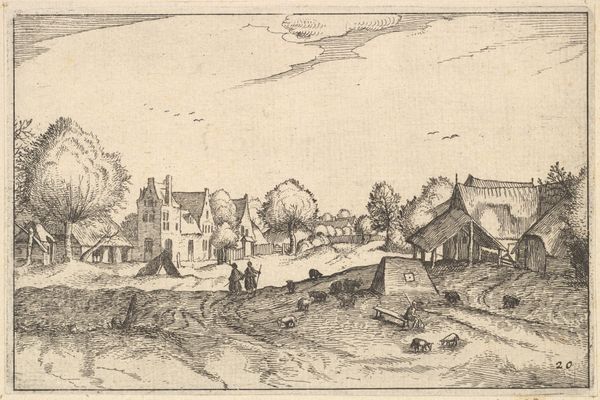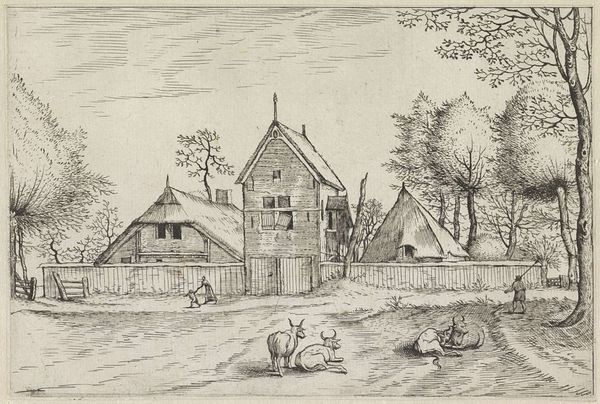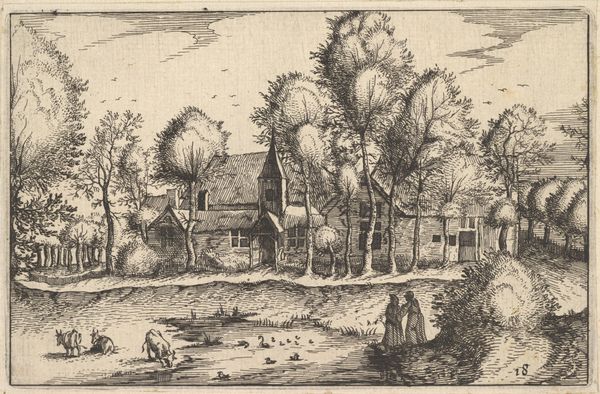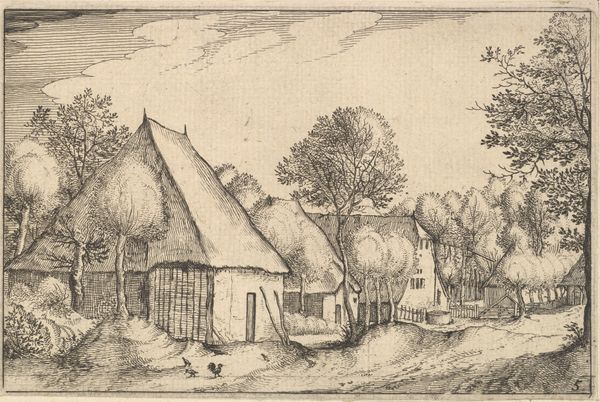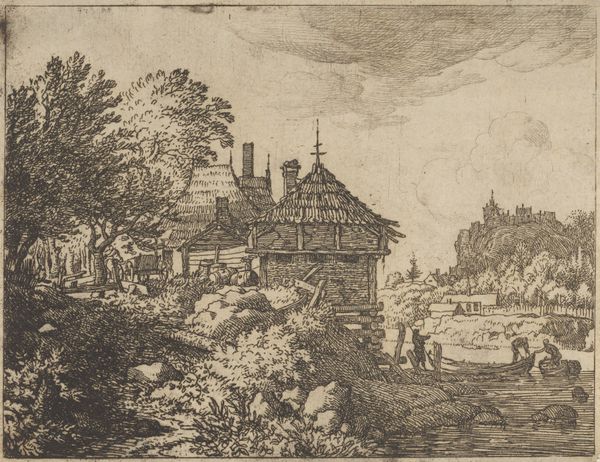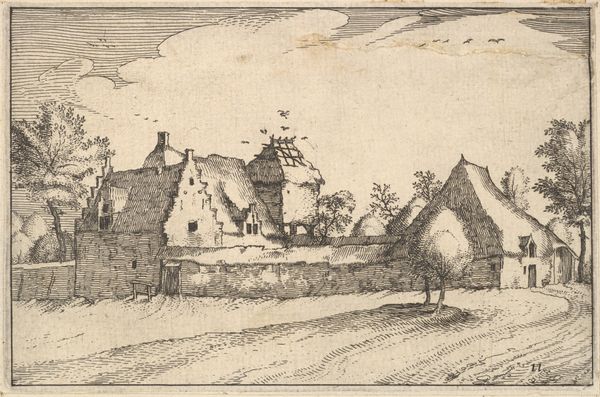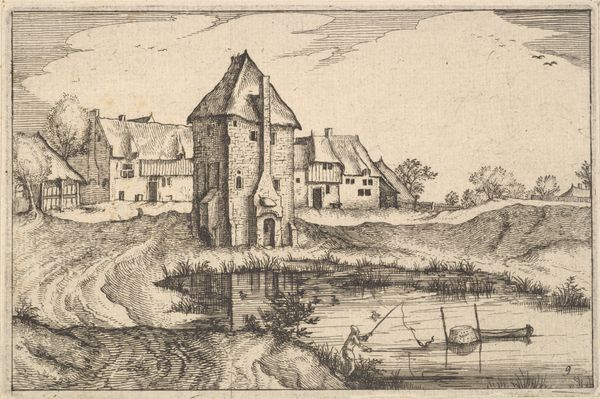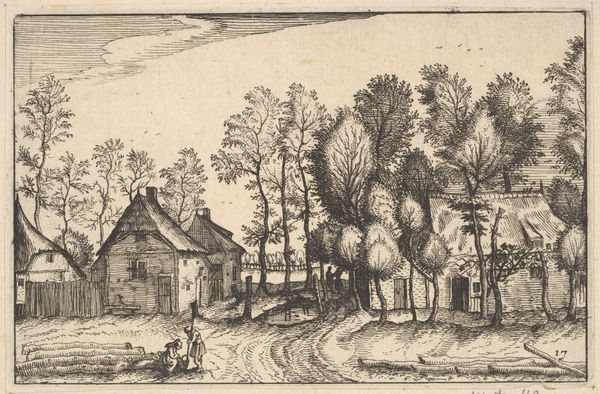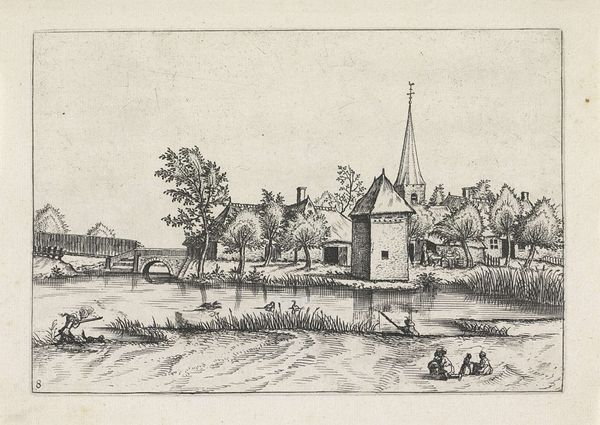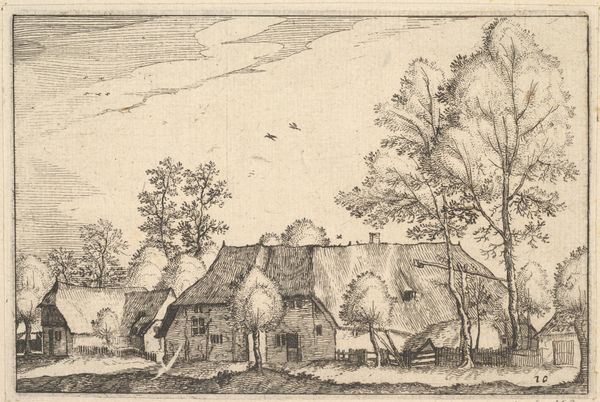
Large Walled Farm, plate 23 from "Regiunculae et Villae Aliquot Ducatus Brabantiae" 1605 - 1615
0:00
0:00
drawing, print, etching
#
drawing
#
animal
#
dutch-golden-age
# print
#
etching
#
landscape
#
realism
Dimensions: Sheet: 3 15/16 × 6 3/16 in. (10 × 15.7 cm)
Copyright: Public Domain
Curator: Let’s discuss “Large Walled Farm,” plate 23 from “Regiunculae et Villae Aliquot Ducatus Brabantiae.” Claes Jansz. Visscher created this etching, dating roughly between 1605 and 1615. Editor: It's rather austere. The cross-hatching and line work certainly dictate a somewhat stark rendering of a farm—especially its rather formidable fencing. It gives me a sense of isolation, of something closed off. Curator: Indeed. Visscher uses line quite rigorously to define form here. Consider how the angularity of the buildings—their gabled roofs and vertical structures—contrasts against the more organic, fluid lines suggesting the surrounding trees. Editor: Precisely! It's as if the geometry of human imposition squares off against nature's looseness. Was this during a period when land ownership and definition were particularly fraught issues in Brabant? This walled structure makes one wonder. Curator: The political and social context is indeed relevant. This print comes from a series documenting rural estates in the Duchy of Brabant. These images functioned, in part, to demonstrate wealth, security, and order—values especially prized during a time of significant upheaval in the Netherlands. The hyper-realistic rendering supports this goal. Editor: The cows casually grazing in the foreground, the woman carrying something on her back, all speak to that constructed sense of idyllic normalcy amid tension. Curator: And let’s observe the formal elements, the way the artist uses perspectival lines not only to give us spatial depth but to guide our eyes systematically toward the main building within the farm complex. The composition invites a detailed "reading" of the various components of the rural estate. Editor: There’s also something poignant in how this calculated representation intends to showcase power—control—yet simultaneously conveys an anxious vulnerability through that imposing wall. A paradox, really. Curator: Agreed. Visscher’s etching, therefore, offers a window not just into a physical landscape but also a complex web of social, political, and artistic concerns of the time. Editor: A somber reflection delivered through skilled, but ultimately restrictive, technique. It prompts much thought about human ambition against the wider scope of history.
Comments
No comments
Be the first to comment and join the conversation on the ultimate creative platform.

